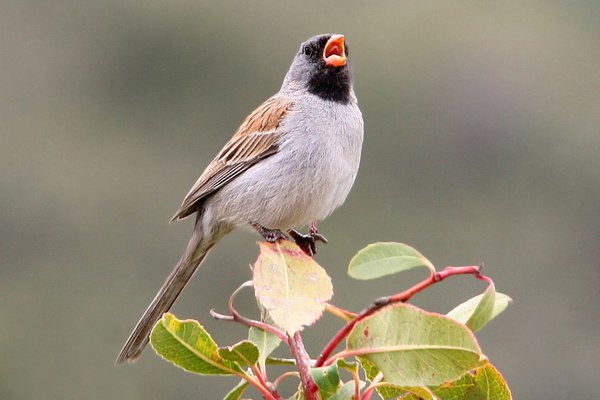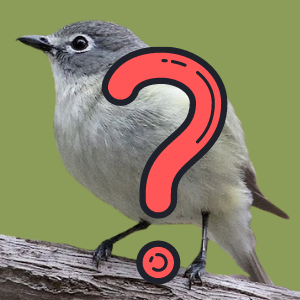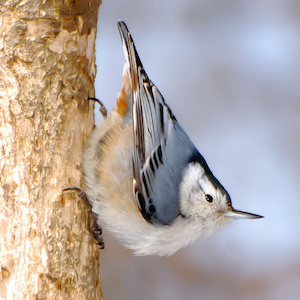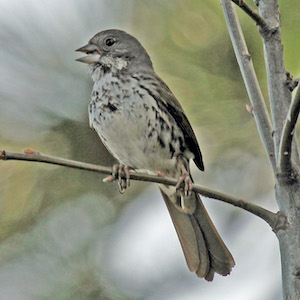About six years ago when former IBP Board member Ed Pandolfino was working as a Northern California regional editor for the journal North American Birds, he noticed something curious. Some years they’d receive lots of reports of Black-chinned Sparrows (Spizella atrogularis) in northern California during the breeding season- which is odd because these sparrows mostly breed in southern California, Arizona, New Mexico, and Mexico. Irruptions like this–when large numbers of a species show up in an area where they are not usually found–are typically seen during the winter in bird species like Snowy Owls or redpolls which winter in the north but may overwinter much further south in years when food resources are not good. Pandolfino wondered if something similar was happening with the Black-chinned Sparrows during the breeding season.
Were the Black-chinned Sparrows also moving in search of better food resources? During the breeding season these sparrows rely on insect prey to feed their nestlings and themselves. In their southern California breeding habitat, the abundance of insects is indirectly correlated with precipitation. Pandolfino wondered if rainfall in southern California influences the northward irruptions. This question led to more questions and a study that was recently published in the journal Western Wildlife by Pandolfino, Lily Douglas of the USFWS, and IBP research ecologist Chris Ray. The paper examines why Black-chinned Sparrows sometimes breed in Northern California and where these irruptive breeders come from.
Were the sparrows reported in northern California ones that typically breed in southern California? Perhaps they were from farther east in Arizona or New Mexico. There are four recognized subspecies of Black-chinned Sparrow: S. a. atrogularis which breeds in central Mexico, S. a. evura which breeds in northernmost Mexico and from western Texas to southeastern California, S. a. cana from Monterey County in California and the west-central Sierra Nevada foothills south to Baja California, and S. a. caurina which breeds in the interior Coast Range of California from Contra Costa County south to eastern San Benito County. But these subspecies are difficult to tell apart unless you have the bird in hand.
Pandolfino has long studied birdsong and thought that song dialects might provide a clue. “Just as people from different areas of a country use slightly different words and pronunciations (i.e., dialects), many birds that learn their songs have different song dialects in different parts of their range,” he says. Individual Black-chinned Sparrows sing two song types and alternate between them as they sing. The researchers examined sparrow song recordings from across the breeding range in the US and found evidence for distinct song dialects between sparrows breeding in southern California (subspecies S.a. cana) and those breeding farther east (S.a. evura) in Arizona and New Mexico, for example. These song types are mainly differentiated by the nature of the first few notes preceding the trill.
Pandolfino and his co-authors then looked at NOAA precipitation records in southern California counties where the sparrows typically breed from 1992-2021. They averaged total precipitation for the eight months prior to each breeding season (August-March) and compared that to the number of reports of Black-chinned Sparrows in northern California that breeding season (April-July). Precipitation in the months leading up to the breeding season determines the amount of herbaceous and other vegetation present during breeding, which in turn determines the abundance of insects. They found a strong relationship between drought in southern California and reports of Black-chinned Sparrows in northern California. In the majority of years when a large number of sparrows were reported in northern California, southern California precipitation was below the 30-year average, ranging from 37% to 63% below average in those years.
The researchers found that essentially all Black-chinned Sparrows breeding in California, including the ones that occasionally irrupt into northern California, use the two song types shown below.
recorded by Ed Pandolfino 10 June in Placer County, CA.
recorded by Ed Pandolfino 10 June in Placer County, CA.
Birds of the subspecies S. a. evura in the western part of their range usually use the two song types below:
recorded by Richard Webster 29 May near Greenlee, AZ.
recorded by Richard Webster 29 May near Greenlee, AZ.
Black-chinned Sparrows recorded during the breeding season in northern California sang the same song dialect as the S. a. cana birds breeding in southern California which strongly suggests that these irruptive breeders originated from this population. But the authors’ examination of song dialects in this species revealed something else: that S. a. caurina is almost certainly not a valid subspecies. S. a. caurina was originally described in 1929 using only 5 birds. In addition, other researchers have found that there is a significant morphological overlap between S. a. cana and S. a. caurina.
Climate change models predict that temperatures in southern California will increase but predictions for precipitation in the region vary; some predict drier conditions while others predict increased or stable precipitation. The ability of southern Californian populations of Black-chinned Sparrow to breed farther north when conditions are poor on the breeding grounds may help them deal with a changing climate, but Pandolfino cautions against interpreting this to mean that birds are not threatened by climate change. “Certainly, migratory birds have some advantages over mammals and plants. But having wings ain’t gonna help birds that breed in the high arctic or at the highest elevations,” he says. “They simply won’t have any refuges.”






